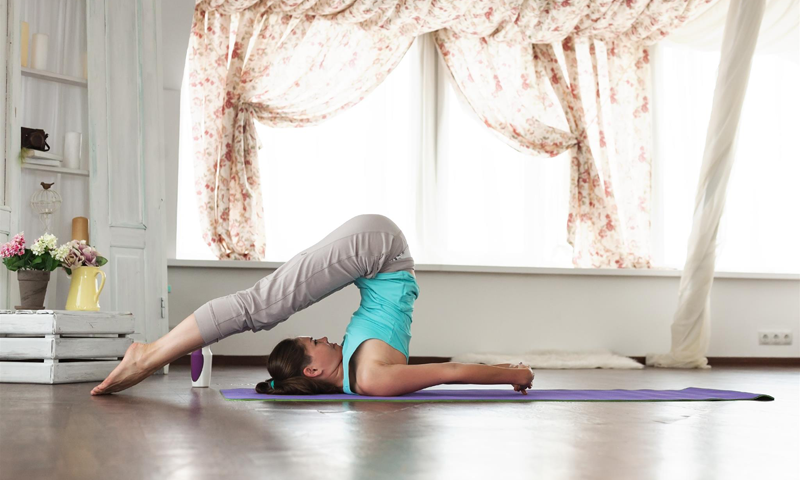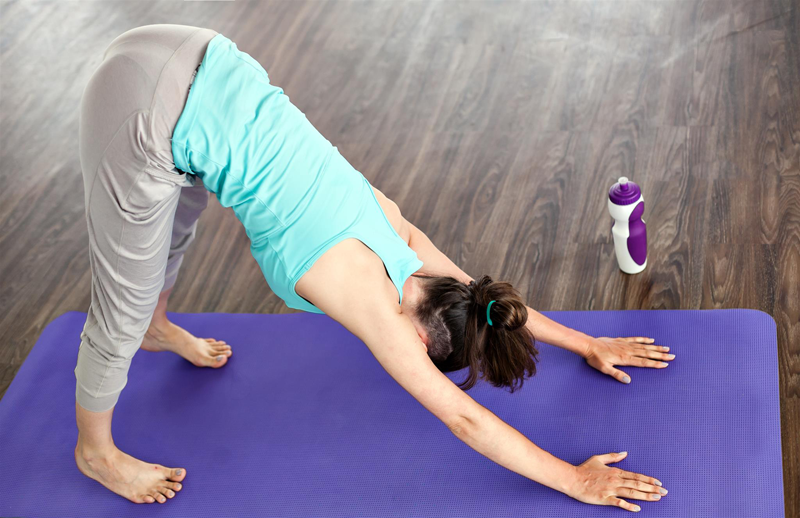
What is Salsa Therapy and how is it Linked to Yoga?
11th May 2018
What is Broga?
21st May 2018Practising Yoga at Home without a Teacher

With its wide array of health benefits, it’s no surprise that yoga is popular worldwide. Whether you’re hoping to tone up for summer or you’re more interested in boosting your energy levels, practising yoga regularly can help you to achieve your goal. While many people attend a weekly class to exercise, others struggle to find the time – especially those working full-time. Thankfully, it’s possible to practice yoga from the comfort of your own home. With just a few minutes practice making all the difference, yoga can be squeezed into a busy lifestyle. As long as you’ve got a comfortable yoga mat and some good-quality sweatpants, you’re good to go! In this article, we explore how to use yoga at home in more detail.
Why Practice at Home?
Practising yoga at home is popular for a variety of reasons. As mentioned previously, fitting in a weekly yoga class can be tricky, even more so for those hoping to practice multiple times a week. Practising at home gives you the freedom to slot yoga into your lifestyle wherever you see fit. To set yourself up for the day, some people enjoy practising for ten minutes before breakfast. However, if you find yourself strapped for time in the morning, you can squeeze in a few minutes in the evening, instead.
Even if you attend a local class, practising yoga at home can still be beneficial. Rather than using home practice to replace your weekly class, it can be used alongside it to develop your skill. Some people enjoy practising yoga every day. For most people, it’s unrealistic to attend a local class every day of the week. This is where yoga at home comes in. On the days you aren’t attending a studio session, home-practice can be used, instead.
Tips for Home Practice
Create a Comfortable Space
When performing yoga at home, it’s important to create a comfortable space to practice in. If you’re lucky enough to have a spare room, consider devoting the space to your yoga. This way, your mat can be left out all the time. In addition to making the practice relaxing, a specific yoga room will encourage you to get on the mat.
While having a specific yoga room is the ultimate goal, most of us don’t have the extra space to make this happen. If this is the case, don’t worry! A peaceful area of the house with enough space to move around will work just as well. If possible, choose an area with space to use incense or candles. This can help you to relax and get into the right mindset as soon as you begin!
Get the Right Gear
When practising at home, it’s important to have the right gear. While there are hundreds of different products on the market, all you really need is a non-slip yoga mat and some comfortable clothes. If you’ve got the budget, picking up some good-quality yoga blocks can be beneficial. These will allow you to adapt the poses whenever necessary. If you’re just beginning, though, blocks can be replaced with household objects such as pillows or blankets.
Warm the Muscles to Prevent Injury
During a yoga class, the instructor will correct your movement to prevent injury. When practising at home, however, this is not the case. Because of this, it’s important to listen to your body and be mindful of vulnerable areas. If you feel any pain or discomfort, adjust the pose or come out of it if you need to. To prevent muscle injury, make sure you warm up before performing advanced postures. Starting the practice with some basic stretches will get the muscles warmed up and ready for action.

Poses to Use at Home
Downward Dog
Easy to perform, Downward Dog is a great way to warm up the muscles. To practice the asana, stand tall with your feet directly below your shoulders. Hinging at the waist, slowly lower your upper body forward until your body forms a triangle. Your hands and feet should now be touching the ground. If your shoulders or hamstrings feel tight, try bending your knees slightly to make the asana easier. Spreading your fingers for additional balance, move your head forward until it is in-between your upper arms. You are in Downward Facing Dog. Hold the posture for 30 seconds, or for however long you feel comfortable.
Tree Pose
Stretching the muscles around the ankles, Tree Pose is great to practice after a long day at work. To per-form the asana, stand tall with your feet together. Keeping your big toes touching, create half an inch of space between your heels. Next, bring your palms together in front of your chest and engage your core. Gently shift your weight onto your right foot, rooting it down by pressing firmly through the ball of your heel. Slowly lift your left foot off the ground, bending the knee as you do so. When you’ve established a sense of balance, place your left foot on the inside of your right thigh. You are in Tree Pose. Hold the asana for 30 seconds before switching sides.
Cat/Cow Pose
Stretching the back and shoulder muscles, Cat/Cow Pose is great for those suffering from back pain or headaches. To perform the pose, begin on all fours. Before going any further, ensure that your wrists are aligned with your shoulders and your knees are aligned with your hips. When you’re ready, take a deep breath inward and arch your back towards the ceiling. You are now in Cat Pose. Hold the pose for around 5 breathes before arching your back towards the ground. You are now in Cow Pose. Hold the position for another 5 breathes before releasing the stretch.
In Summary
Whether you’re too busy to use a local class or you’re hoping to improve your craft by practising alongside your weekly session, practising yoga at home can benefit yogis of all sorts. All you need is some breathable yoga clothes and a good-quality mat!

